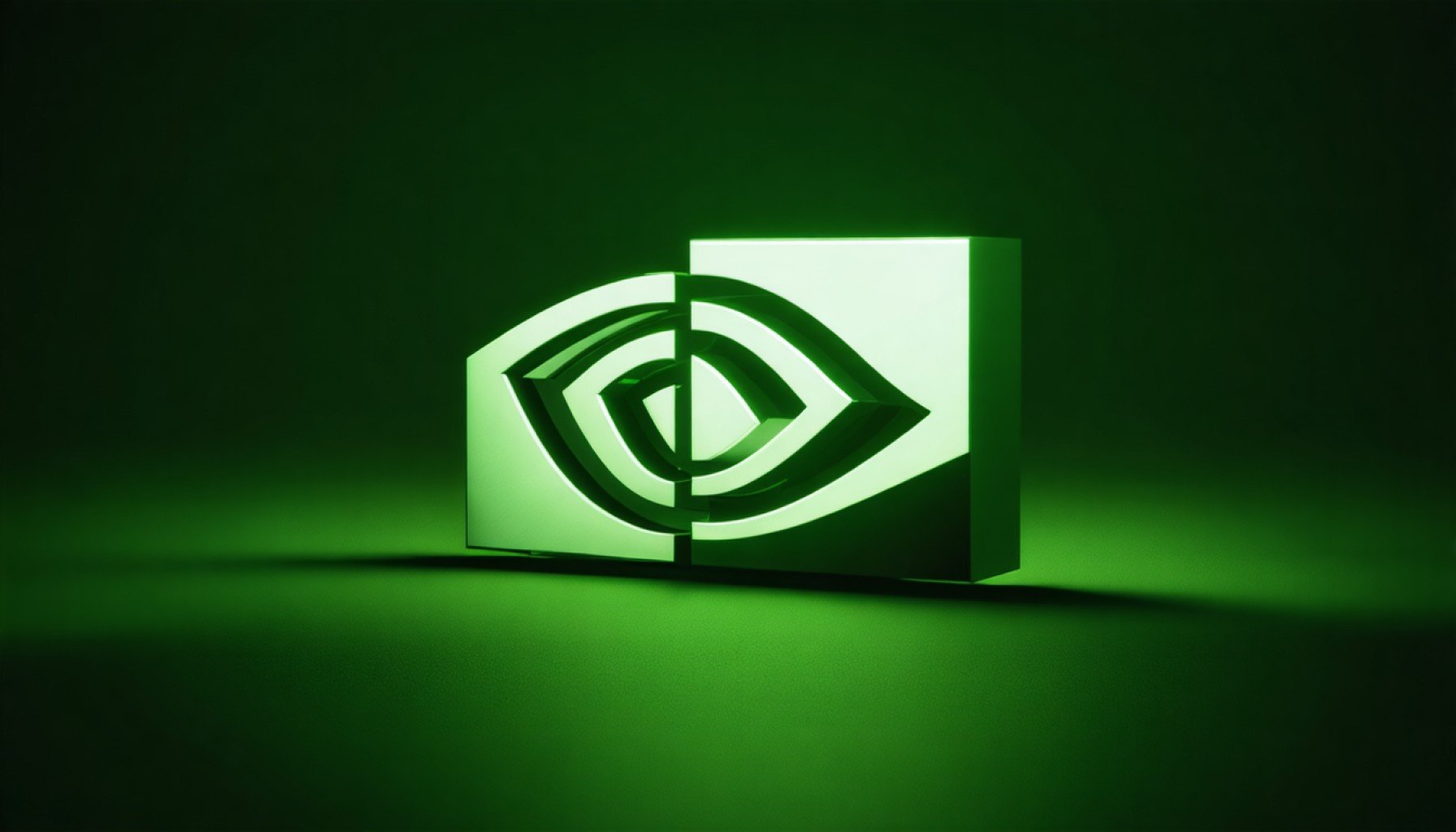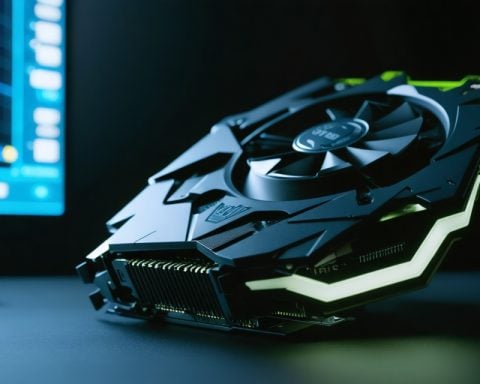- Nvidia is a central player in the artificial intelligence landscape, heavily influencing global markets and stock indices like the S&P 500.
- The company dominates the graphics processing unit (GPU) market with a 90% share, transitioning from gaming to AI applications in key sectors like data centers and crypto mining.
- Recent developments, such as China’s efficient AI models that use fewer Nvidia GPUs, pose competitive challenges and highlight the need for continued innovation.
- Anticipation builds around Nvidia’s upcoming earnings report, as investors seek insights into the company’s capacity to maintain its market leadership and navigate emerging pressures.
Amid the flurry of quarterly earnings reports, one name sparks curiosity and anticipation: Nvidia. This tech behemoth, a linchpin in the vast world of artificial intelligence, stands as more than a mere blip on investors’ radars—it’s the storm they’re all tracking.
The anticipation isn’t unfounded. Nvidia’s influence on the global market is colossal, representing a juggernaut with the power to sway the stock market like few others. Last year alone, its stock was a driving force behind over a fifth of the S&P 500’s gains, highlighting its profound impact. As cutting-edge AI strides forward, Nvidia emerges as the premier vessel through which investors channel their hopes and trepidations in the AI race.
The rise of Nvidia is tethered to its dominance in graphics processing units (GPUs), securing an astounding 90% share of its market. What began with gaming evolved into a technological revolution, with GPUs transforming the landscape of crypto mining and AI deployment in data centers around the globe. Yet, the path forward is not without hurdles.
Amidst recent breakthroughs, like those from China’s DeepSeek, Nvidia faces new challenges. The emergence of efficient AI models requiring fewer Nvidia GPUs sent ripples through the market, underscoring the urgency for innovation. While this has sparked concern, it also suggests an exciting horizon where new AI affordability could ignite increased demand for AI infrastructure.
As Wednesday approaches, the world waits, eyes flickering to the headline-grabbing earnings report of a company that once began with the humble spark of gaming ambition and now fuels the AI dreams of tomorrow. Will Nvidia maintain its towering status, or are storm clouds on the horizon? Investors remain riveted, waiting for answers hidden within those elusive figures.
Is Nvidia Still the King of AI and GPUs? Uncover The Future of This Tech Giant!
How-To Steps & Life Hacks: Optimizing Nvidia GPU Performance
1. Update Drivers Regularly: Ensure you have the latest Nvidia drivers installed for optimal performance and stability. This is crucial for both gaming and AI computations.
2. Use Nvidia’s GeForce Experience: Utilize this tool to optimize game settings automatically. It can also be used to record gameplay and stream.
3. Adjust Power Settings: For power users, set the GPU to performance mode in the Nvidia Control Panel to prioritize performance over power saving.
4. Monitor GPU Temperature: Use tools like MSI Afterburner to keep an eye on temperature and performance metrics, ensuring your GPU doesn’t overheat.
5. Undervolt for Efficiency: Advanced users can consider undervolting their GPU to achieve a balance of performance and power consumption, extending the GPU’s lifespan.
Real-World Use Cases of Nvidia GPUs
1. Autonomous Vehicles: Nvidia’s DRIVE platform is pivotal in developing self-driving cars, providing the computational power necessary for neural networks used in autonomous navigation.
2. Healthcare Innovations: Nvidia GPUs are used in medical imaging, helping with rapid image processing crucial for diagnostic procedures.
3. Finance and Trading: GPUs accelerate machine learning models used in stock trading and risk management, providing real-time data analysis.
4. Scientific Research: In laboratories, Nvidia GPUs empower simulations and computations previously impossible due to computational constraints.
Market Forecasts & Industry Trends
– Dominance in AI: With a projected growth rate of over 25% in the AI semiconductor market, Nvidia’s ongoing innovations continue to place it at the forefront (source: Gartner).
– Gaming Market: Despite challenges, gaming remains a strong revenue stream for Nvidia, driven by new game releases and continued interest in esports.
– AI Democratization: As AI technology becomes more accessible, Nvidia is expected to tap into smaller businesses’ and startups’ needs for affordable, high-performance computing solutions.
Reviews & Comparisons
– Nvidia vs. AMD: Nvidia leads in AI applications, while AMD offers a competitive edge in certain gaming scenarios with its cost-effective GPUs.
– Nvidia vs. Intel: While Intel chips lead in CPUs, Nvidia is unmatched in GPU prowess for both gaming and AI workloads.
Controversies & Limitations
– Cost Concerns: Nvidia’s GPUs are often more expensive than competitors, potentially limiting accessibility for smaller enterprises.
– Market Competition: Rising competitors and alternative AI methods could threaten Nvidia’s dominance if not innovated upon swiftly.
Features, Specs & Pricing
– RTX Series: Nvidia’s GeForce RTX 30-series offers ray tracing, AI-enhanced graphics, and competitive pricing, starting from around $329 for the RTX 3060.
– A100 Tensor Core: Designed for high-performance computing and AI workloads, it delivers unmatched speed and efficiency, though at a premium price point, often exceeding $10,000.
Security & Sustainability
– Energy Efficiency: Nvidia is committed to improving the energy efficiency of its GPUs, aligning with environmental sustainability goals.
– Cybersecurity: Nvidia provides robust security features to ensure that its CUDA platform remains protected from vulnerabilities and exploits.
Insights & Predictions
– AI Growth: Nvidia is expected to continue leading in AI, with increasing use in edge computing and IoT applications.
– Future Technologies: Advancements in quantum computing and AI might necessitate further partnerships and innovations from Nvidia to maintain its leadership.
Tutorials & Compatibility
– Nvidia CUDA Toolkit: Developers should familiarize themselves with CUDA for optimizing AI models on Nvidia hardware.
– Cross-Platform Support: Nvidia GPUs are compatible with major operating systems, including Windows, Linux, and macOS.
Pros & Cons Overview
Pros:
– Industry-leading in AI and gaming graphics.
– Broad range of high-performance products.
– Strong support and continuous innovation.
Cons:
– Higher price point compared to competitors.
– Dependent on continuous innovation to fend off rising competition.
Actionable Recommendations
– Stay Informed: Investors and tech enthusiasts should stay updated on Nvidia’s quarterly reports and industry news to make informed decisions.
– Maximize GPU Usage: Regularly update your drivers and optimize settings to get the most out of your Nvidia GPU.
For more information on Nvidia’s latest products and innovations, visit the Nvidia website.



















